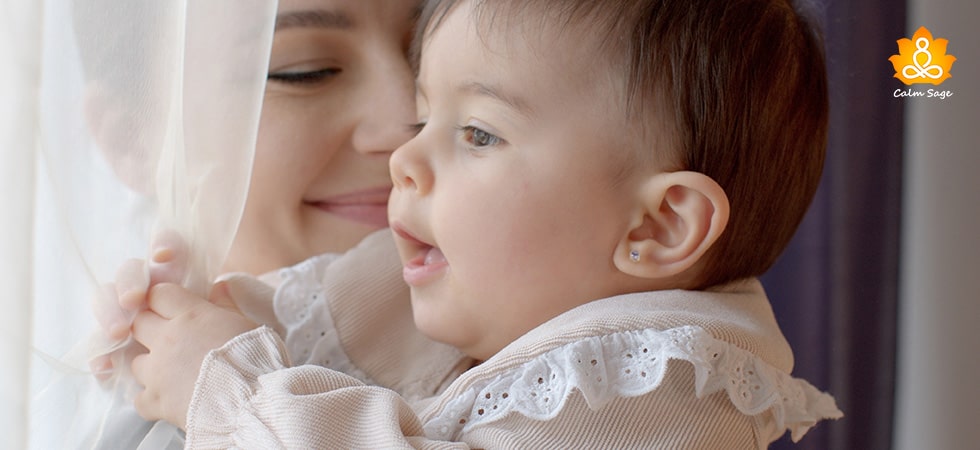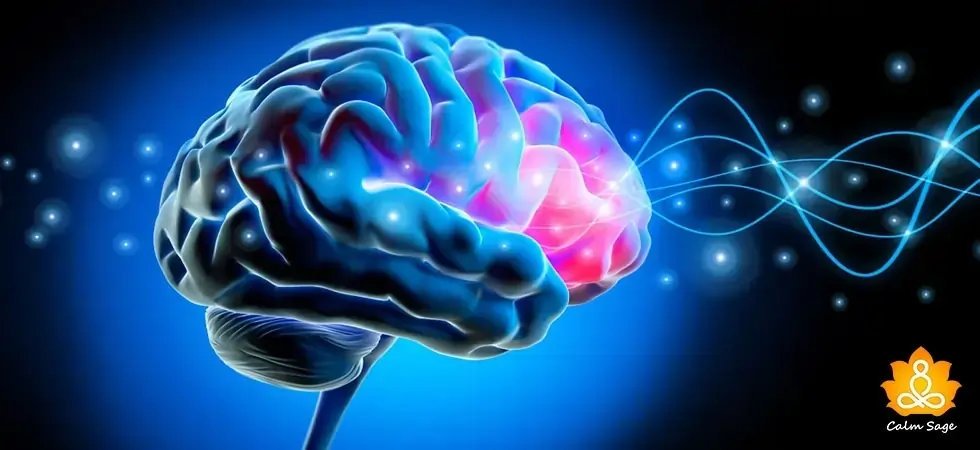Psychology Of Attachment Theory Based on John Bowlby’s Research

We all have been through a situation wherein we struggled with self-doubt regarding our emotional needs or attachment styles. We all have asked somewhere at a point in our life, “Does this attachment style come from my mother?” or “Am I asking for too much?”
With a lot of mental awareness going on, yes, parenting, attachment styles, or past experiences can have a lot of impact on your relationships, according to Sigmund Freud. It’s very common that whenever we get into trouble, we look back at our mother’s experiences, why not, she has raised us, influenced us, and parented us on a regular basis. Apart from mothers, there are other relationships as well that have a great influence on what we are today, such as godparents, siblings, grandparents, close family friends, teachers, friends, and peers.
Till now, the question remains the same, “What makes us “Us”? or “On what basis do we define relationships?” or “What factors could lead to a positive attachment style when it comes to forming relationships, parenting a child, or maintaining a friendship with friends?”
Psychology says that we are not completely what our mothers influenced us to be, but we are a combination of both parents and early experiences. As of now, this is what we have understood from attachment theory, but my friend, attachment theory is more than this statement.
In this article, let us explore what attachment theory is, examples, a list of attachment theories, and its applications in the real world to form healthy and positive relationships with everyone. So, let’s get started!
List of Contents
What is Attachment Theory?
The attachment theory in psychology was first developed by John Bowlby who researched the effects of separation between parents and infants.
Bowlby found that infants are engaged in extreme behaviors to avoid separation from their parents or when reconnected with their parents, they were involved in evolutionary mechanisms such as screaming, crying, or clinging.
Bowlby found that these attachment-related behaviors are responses to the perceived threat of losing the primary caregiver.
Bowlby also explained that infants who are engaged in such behaviors are more likely to survive. These behaviors and observations helped in assembling the attachment theory which can help us guide our patterns of forming or maintaining relationships.
Attachment theory helps us understand our attachment styles in adulthood based on our relationships and early experiences in childhood.
Importance of Forming Early Emotional Bonds
- It’s important to form early emotional bonds because it helps children understand appropriateness and sensitivity toward everyone’s needs.
- Additionally, early emotional bonds help in promoting sensitive responsiveness.
- Parents and children are able to understand each other’s signals which can be vital for the development of babies.
- It helps in establishing trust and shaping future learning and relationships.
Origins of Attachment Theory
While working on the attachment theory in the 1930s, John Bowlby also observed that some children struggled to form close relationships. Therefore, he researched more about the family history of children and he found that those children endured disruptions at early ages.
Herein, Bowlby concluded that “Early emotional bonds established between a parent or children can result in healthy development of children.” Consecutively, early disruptions can have a direct impact on the child’s growth and development throughout their lifetime.
Moreover, Bowlby also suggested that human development should be understood in terms of evolution. Children’s attachment behaviors help us in making sure that the child is protected by primary caregivers.
The Stages of Attachment
John Bowlby introduced four stages of attachment while children develop attachments:
Phase 1: Birth to 3 Months
From the time an infant is born, infants show preferences for looking at humans with similar voices to their mothers. During the first phase, infants do respond but they can’t distinguish differences. During the 2nd month, they start eliciting social smiles and making eye contact.
Herein Bowlby explained that social smiling helps in increasing attention and promoting attachment. The baby also increases their attachment by sucking, grasping, or babbling. Each behavior promotes emotional investment and bonding.
Phase 2: From 3 to 6 Months
A 3-month-old infant starts differentiating between people and starts reserving their behaviors for people they like or prefer. They will babble and smile at people they know. For example, if they cry, they know which they should rely on.
Generally, babies’ preferences are restricted to primary caregivers. Herein, Bowlby suggested that the babies may also prefer other individuals than mothers, especially those who had the most positive interactions with them.
Phase 3: From 6 Months to 3 Years
From the beginning of 6 months, the baby’s preferences start becoming specific and could be more intense. This type of anxiety can be called separation anxiety.
Moreover, while crawling babies start looking for their favorite person. Additionally, babies also might develop a fear of strangers in the period of absence; however, when their favorite person enters, they might enthusiastically welcome them.
Herein, Bowlby stated that when babies become one year old, they have already developed a working model of their caregivers, and they very well know how their caregivers respond to different situations.
Phase 4: From 3 Years to Entire Childhood
Bowlby stated that the overall impact of the first 3 years can be seen during the entire childhood. However, around 3 years old, children are aware of their parent’s goals and plans. As a result, the child feels less anxious or concerned when the caregiver leaves for a certain time.
Different Types of Attachment Styles
In 1950, John Bowlby kept Mary Ainsworth as a research assistant and collaborator. Meanwhile, Bowlby observed that all children have individual differences in the context of attachment. Later on, Ainsworth undertook the research, assessed the differences, and called them the “Strange Situation.”
The “Strange Situation” runs around two scenarios wherein a caregiver leaves the child with a stranger and in the second scenario the infant is left alone and later on joined by a stranger. As a result, Ainsworth identified three different patterns of attachment. Hereafter, four attachment styles were added to the research:
The four attachment patterns observed by Ainsworth and her colleagues were:
1. Avoidant Attachment
Children with avoidant attachment are more insecure about their attachment with the caregiver. Children with avoidant attachment are not distressed by the absence of their caregivers but they might deliberately avoid caregivers after their arrival.
2. Disorganized Attachment
Disorganized attachment is most commonly displayed in children who are neglected, abused, or raised through negative parenting practices. Such children are more confused and disoriented in the presence of the caregiver. For them, the caregiver can be a source of fear and comfort at the same time which might lead to conflicted and disorganized behaviors.
3. Secure Attachment
Infants or children with secure attachment form a secure base with their caregivers which helps them to explore the world. In need of reassurance or fear, they might return to their caregivers, but children with a secure attachment style explore the world without being frightened easily. If the caregiver leaves or is not able to attend, they will act like babies.
However, these children are quite confident that their caregiver will return. Such children are filled with joy and often radiate positivity whenever they meet their caregivers.
4. Resistant Attachment
Resistant attachment is another type of insecure attachment wherein the children become extremely upset when the parents leave. Additionally, when the caregiver returns their behavior becomes inconsistent. They might seem happy initially and often show anger to the caregiver. Moreover, they are also great at displaying moments of avoidance as well.
The Lasting Impact of Early Attachment
With this, we could conclude that children who are securely raised by their caregivers tend to have stronger self-esteem and self-reliance during their adulthood. These children also become more independent, productive, and successful in all backgrounds, and experience fewer mental health-related issues such as stress, depression, and anxiety throughout their lifetime.
Research shows that caregivers or children who are not able to form secure attachments might have to deal with negative impacts during childhood or throughout their lives. In such cases, children are commonly diagnosed with mental health issues like:
- Attachment trauma
- Childhood trauma
- Conduct disorder
- Oppositional defiant disorder (ODD)
- Post-traumatic stress disorder (PTSD)
- Reactive attachment disorder
- Disinhibited social engagement disorder (DSED)
In order to protect your loved ones or children from attachment disorders, learn about their attachment styles and adopt coping strategies based on their individuality.
If you think you or your loved one might be struggling with an attachment disorder, click below to get a proper diagnosis and assistance:
Therapy link
Related Read: Effective steps to heal from Unhealthy Attachment Styles
Frequently Asked Questions
1. What is attachment theory in psychology?
In short and simple words, Attachment theory in psychology is the theory revolving around the need to form an emotional bond with a caregiver or loved one.
2. What are the best books on attachment theory?
As far as researched and reviewed, Attached: The New Science of Adult Attachment and How It Can Help You Find-and Keep-Love By Amir Levine and Rachel Heller is one of the best books to understand attachment theory.
3. Do attachments affect social and emotional development?
According to the psychology of attachment theory, we all are aware that infants or toddlers are innate towards their primary caregiver because of the sense of security and safety. This proves that attachments do affect social and emotional development in individuals.
4. Will attachment theory spawn the next generation of research?
According to the researchers, the important features of attachment theory can help in spawning the next generation of research which can also be helpful in understanding the personality and social development of people.
I hope this blog helps you understand what attachment theory is and its examples. Comment down and share your queries through the same. For more such content, connect with us through all social media platforms.
Thanks for reading!




















